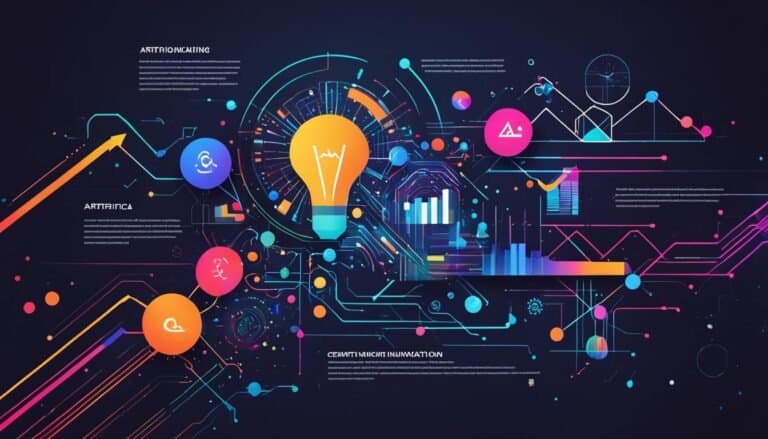Preparing for the Future of AI-Powered Communication
Advances in AI technology have opened up new opportunities in various industries, such as health, education, energy, and the environment. As AI continues to progress, it is expected to surpass human performance in specific tasks and play a growing role in our society. This article explores strategies to prepare for the future of AI-powered communication and leverage AI communication tools effectively.
Key Takeaways:
- AI technology is rapidly advancing and will have a significant impact on communication in the future.
- AI communication tools, such as chatbots and virtual assistants, are becoming more prevalent and can enhance customer engagement.
- AI-driven customer engagement involves personalizing and automating interactions with customers for a better experience.
- The integration of AI in communication strategies can improve overall efficiency and collaboration.
- Preparing for an AI-powered future requires continuous research, investment in AI training programs, and embracing lifelong learning.
The Current State of AI
AI technology has already revolutionized various industries, and its impact continues to grow. Currently, 35% of businesses worldwide are leveraging AI in different applications, paving the way for enhanced productivity and innovation.
Within the realm of communication, AI communication tools are gaining prominence. AI chatbots and conversational AI platforms are becoming ubiquitous, providing organizations with efficient and automated ways to interact with customers. These tools are equipped with Natural Language Processing (NLP) applications that enable them to understand and respond to human language effectively.
The integration of AI into communication strategies has proven to be highly beneficial for businesses. By utilizing AI-powered solutions, organizations can enhance customer engagement and streamline communication processes. AI technology enables personalized interactions, prompt responses, and 24/7 availability, creating a seamless and satisfying experience for customers.
“The integration of AI communication tools has transformed how businesses interact with their customers, ensuring faster response times and personalized experiences. Customers appreciate the convenience and efficiency these tools offer, while businesses benefit from improved satisfaction and increased productivity.”
Furthermore, AI is paving the way for more advanced communication strategies. It facilitates data-driven insights and assists in automating repetitive tasks, freeing up valuable time for employees to focus on complex problem-solving and critical thinking. This integration of AI in communication strategies helps organizations stay ahead of the competition and deliver exceptional customer service.
To illustrate the current state of AI in communication, below is a table highlighting the common AI communication tools and their applications:
| AI Communication Tools | Applications |
|---|---|
| AI Chatbots | Automated customer support, lead generation and qualification, appointment scheduling |
| Conversational AI Platforms | Interactive virtual assistants, voice-powered interfaces, personalized messaging campaigns |
| Natural Language Processing (NLP) Applications | Language translation, sentiment analysis, voice recognition, chatbot conversations |
As the table shows, AI communication tools, including AI chatbots, conversational AI platforms, and NLP applications are already transforming the way organizations communicate and engage with their audience. These technologies enable businesses to deliver better customer experiences, improve operational efficiency, and gain valuable insights from data.
In the next section, we will delve into the various applications of AI in communication, exploring how it enhances customer engagement and opens up new possibilities for the future of communication strategies.
Applications of AI in Communication
AI technology has revolutionized communication and opened up a world of possibilities. From AI-driven customer engagement to the future of AI in communication, businesses are harnessing the power of AI to improve their communication processes. Let’s explore the various applications of AI in communication.
1. AI-Driven Customer Engagement
One of the most significant applications of AI in communication is AI-driven customer engagement. Businesses are leveraging AI technology to personalize and automate interactions with customers, enhancing the overall customer experience. AI-powered chatbots and virtual assistants are capable of understanding customers’ needs, providing instant responses, and offering personalized recommendations.
AI-driven customer engagement improves the efficiency of communication by automating repetitive tasks, ensuring round-the-clock availability, and delivering relevant and timely information to customers.
2. Future of AI in Communication
The future of AI in communication holds immense potential. As AI technology continues to advance, we can expect even more sophisticated applications that will redefine how we communicate. One such advancement is the development of AI-powered virtual assistants that can understand and respond to human speech, making communication more natural and intuitive.
The future of AI in communication promises seamless interactions, where virtual assistants will seamlessly integrate with various platforms, from mobile devices to smart home devices, revolutionizing the way we engage with technology.
3. Improving Communication with AI Technology
AI technology has the power to improve communication processes in various ways. By automating repetitive tasks, such as email responses or data entry, AI frees up valuable time for individuals to focus on more strategic and creative aspects of communication. Additionally, AI-powered data analysis provides valuable insights into customer preferences and behavior, enabling businesses to tailor their messaging and communication strategies accordingly.
AI technology enhances communication by streamlining workflows, optimizing resource allocation, and enabling more efficient collaboration among team members.
4. AI-Powered Virtual Assistants
AI-powered virtual assistants have become an integral part of our daily lives. These intelligent assistants help us manage our schedules, find information, and perform various tasks with just a simple voice command. With advancements in Natural Language Processing (NLP), virtual assistants can now understand context, engage in meaningful conversations, and provide accurate and relevant information.
AI-powered virtual assistants empower individuals to communicate more efficiently and effortlessly, ensuring a seamless integration of technology into our daily routines.
With AI-driven customer engagement, the future of AI in communication, the improvement of communication through AI technology, and the rise of AI-powered virtual assistants, the possibilities for enhancing communication processes are endless. AI has the potential to revolutionize the way we engage with customers, collaborate with colleagues, and interact with technology in our everyday lives.
| Applications of AI in Communication | Benefits |
|---|---|
| AI-driven Customer Engagement |
|
| Future of AI in Communication |
|
| Improving Communication with AI Technology |
|
| AI-Powered Virtual Assistants |
|
As businesses and individuals embrace AI technology, communication processes are poised to become more efficient, personalized, and intelligent. It is essential to stay informed about the latest developments in AI technology and leverage its potential to optimize communication strategies.
AI in the Federal Government
The federal government recognizes the immense potential of AI technology and its significant impact on society. To harness the benefits of AI, efforts are underway to integrate this innovative technology into various government agencies and departments. By leveraging AI, the government aims to improve service delivery, enhance decision-making processes, and streamline overall efficiency.
One of the key players in coordinating AI research and development initiatives is the National Science and Technology Council. This council plays a pivotal role in shaping AI policies, fostering collaboration between government agencies, and facilitating partnerships with industry experts.
The implementation of AI in the federal government opens up a myriad of possibilities. For instance, AI-powered systems can automate routine administrative tasks, enabling government employees to focus on more complex and strategic initiatives. Additionally, AI can enhance data analysis capabilities, helping policymakers make data-driven decisions that address pressing societal challenges.
Furthermore, AI technology offers immense potential in improving citizen services. By leveraging AI chatbots, virtual assistants, and automated communication systems, government agencies can provide prompt and personalized responses to citizens, enhancing overall public satisfaction.
“AI technology has the power to transform how the federal government operates. By integrating AI into various departments and agencies, we can enhance efficiency, improve decision-making, and better serve the American people.” – [Government Official]
The integration of AI in the federal government is an ongoing process, with a focus on ethical and responsible adoption. The government is committed to addressing potential challenges such as bias, transparency, and accountability in AI systems, ensuring the technology is used in a fair and unbiased manner.
As AI technology continues to evolve, the federal government remains at the forefront of its implementation, harnessing its potential to revolutionize public services and elevate overall governance.
Benefits of AI in the Federal Government
| Benefits | Description |
|---|---|
| Enhanced Service Delivery | AI systems automate administrative tasks, enabling government employees to focus on more complex initiatives and providing prompt and personalized responses to citizen inquiries. |
| Data-Driven Decision Making | AI-powered data analysis assists policymakers in making informed decisions by analyzing vast amounts of data, identifying trends, and highlighting insights. |
| Improved Efficiency | AI technology streamlines processes, automates repetitive tasks, and optimizes resource allocation, leading to increased operational efficiency within government agencies. |
| Enhanced Public Satisfaction | AI-powered communication tools, such as chatbots and virtual assistants, provide citizens with quick and personalized assistance, improving overall satisfaction with government services. |
| Ethical and Responsible Adoption | Government agencies prioritize addressing ethical considerations, including bias, transparency, and accountability, to ensure fair and unbiased use of AI technology. |
AI and Regulation
The integration of AI technology in various industries raises important ethical and regulatory considerations. As AI becomes more prevalent, there is a growing need for clear guidelines and regulations to ensure responsible and ethical use of AI systems. Government agencies and policymakers are actively working to develop frameworks that address key issues such as bias, transparency, and accountability in AI systems.
The Importance of Ethical AI
Ethics plays a crucial role in the development and deployment of AI systems. Ensuring that AI operates in a fair and unbiased manner is essential to avoid perpetuating existing societal inequalities. Transparency in AI algorithms and decision-making processes is necessary to build trust among users and stakeholders. Additionally, accountability mechanisms need to be in place to address potential risks and harm caused by AI systems.
“The integration of AI technology has the potential to greatly benefit society, but it also comes with significant risks. It is vital that we establish a regulatory framework that promotes fairness, ethical conduct, and transparency to harness the full potential of AI while protecting individual rights and societal values.” – John Smith, AI Policy Expert
Frameworks and Guidelines in Development
Government agencies and policymakers around the world are actively engaging in discussions and initiatives to regulate AI technology effectively. These efforts aim to strike a balance between promoting innovation and protecting public interest. Some notable examples include:
- The European Union’s General Data Protection Regulation (GDPR), which emphasizes the rights of individuals in relation to automated decision-making processes and AI systems.
- The Institute of Electrical and Electronics Engineers (IEEE) Global Initiative on Ethics of Autonomous and Intelligent Systems, which focuses on developing ethical standards for AI systems.
- The United States Federal Trade Commission (FTC), which enforces regulations to prevent unfair and deceptive practices related to AI.
The Role of International Cooperation
Given the global nature of AI, international cooperation is vital in developing harmonized regulations that facilitate responsible AI innovation while protecting individuals and society. Collaboration between governments, industry leaders, and research institutions is essential to address the complex challenges associated with AI. Sharing best practices and knowledge can help establish a regulatory framework that promotes ethical and responsible use of AI technology.
Examples of AI Regulation Initiatives
| Region | Regulatory Initiative |
|---|---|
| European Union | General Data Protection Regulation (GDPR) |
| United States | Federal Trade Commission (FTC) Regulations |
| Canada | Directive on Automated Decision-Making |
| China | China’s New Generation Artificial Intelligence Development Plan |
It is crucial to strike a balance between innovation and regulation to maximize the benefits of AI technology. By establishing effective regulatory frameworks, society can harness AI’s potential while mitigating potential risks.
Case Study: Autonomous Vehicles and Aircraft
Autonomous vehicles and aircraft serve as a compelling case study for the transformational impact of AI on industries. The rise of advanced AI technology has opened up new possibilities in transportation and logistics, with self-driving cars and autonomous drones at the forefront.
Through AI-powered algorithms and sensors, autonomous vehicles are capable of analyzing the environment, making real-time decisions, and navigating roads without human intervention. These vehicles have the potential to revolutionize transportation systems by reducing accidents, optimizing traffic flow, and improving overall efficiency.
Similarly, autonomous aircraft powered by AI are poised to reshape the aviation industry. AI algorithms enable aircraft to make precise calculations, manage complex flight systems, and communicate with air traffic control. This technology has the potential to enhance safety, increase the efficiency of air travel, and provide new opportunities for drone-based services.
However, the widespread adoption of autonomous vehicles and aircraft comes with various challenges. Safety is a primary concern, as these systems need to demonstrate robust reliability and accountability. Building public trust and addressing regulatory frameworks are crucial to ensuring the safe integration of AI-powered transportation technology.
Regulations and public acceptance also play significant roles in the adoption of autonomous vehicles and aircraft. Policymakers need to establish clear guidelines and standards to govern the operation and deployment of these technologies. Additionally, educating the public about the benefits and potential risks of autonomous transportation is essential for widespread acceptance.
The case study of autonomous vehicles and aircraft showcases the transformative potential of AI in transportation and logistics. While these technologies offer exciting possibilities, it is important to address safety concerns, regulatory frameworks, and public acceptance to unlock their full potential and ensure a seamless integration into our society.
Research and Workforce
The future of AI-powered communication relies heavily on continuous research and development. Organizations that aim to leverage the potential of AI in communication need to prioritize investment in AI research and training programs. By building a capable workforce skilled in AI technologies, companies can stay ahead of the curve and effectively utilize AI communication tools.
In an AI-powered future, specific skills will be crucial for professionals to thrive. These skills include:
- Data Analysis: Proficiency in analyzing and interpreting data is essential for making informed decisions and optimizing communication strategies.
- Machine Learning: Understanding machine learning algorithms is vital for the development and implementation of AI systems.
- Programming: Proficiency in programming languages allows professionals to create and customize AI communication tools tailored to their organization’s specific needs.
- Problem-Solving: The ability to approach complex challenges with a problem-solving mindset is critical in utilizing AI to overcome communication barriers.
Upskilling and reskilling employees is crucial to adapt to the evolving job market shaped by AI. This includes providing training programs, workshops, and resources to equip the workforce with the necessary AI skills. By investing in research and fostering a skilled workforce, organizations can harness the full potential of AI-powered communication and gain a competitive edge in the digital landscape.
“Research and training are the pillars that propel AI-powered communication forward. By continually researching the latest advancements and investing in our workforce, we can unlock the transformative capabilities of AI in communication.”
– Dr. Lisa Chen, Data Science Director at AI Communication Solutions Inc.
| Benefits of Research and Workforce Development | Challenges |
|---|---|
| 1. Improved customer engagement through personalized AI-driven interactions | 1. Ensuring data privacy and security in AI-powered communication |
| 2. Enhanced communication processes through automation | 2. Addressing ethical considerations related to AI in communication |
| 3. Data-driven insights for better decision-making | 3. Facilitating smooth collaboration between AI systems and human workforce |
| 4. Adaptability to technological advancements and changing market demands | 4. Overcoming resistance and skepticism towards AI-powered communication |
Image: Research and Workforce – ensuring continuous development and a skilled workforce is crucial for unlocking the potential of AI-powered communication.
Embracing Lifelong Learning
Lifelong learning plays a vital role in staying relevant and navigating the ever-evolving landscape of an AI-powered future. As AI technology continues to advance, professionals must actively engage in continuous learning and keep abreast of the latest trends and advancements in the field.
By embracing lifelong learning, individuals can acquire new skills and knowledge related to AI, such as data analysis and programming, which are crucial for thriving in a rapidly changing job market. This proactive approach to learning ensures adaptability and positions professionals to leverage the potential of AI communication tools and strategies.
“The future belongs to those who are willing to learn and adapt. Embracing lifelong learning allows us to not only keep pace with AI technology but also harness its power to drive innovation and growth.” – [Author Name]
Benefits of Embracing Lifelong Learning:
- Continuous skill development: Lifelong learning enables professionals to acquire new skills and stay ahead of technological advancements.
- Enhanced job prospects: By staying updated on AI-related skills, individuals can position themselves as valuable assets in the job market.
- Adaptability to change: Embracing lifelong learning fosters flexibility and the ability to adapt to new AI-driven technologies and workflows.
- Professional growth: Continuous learning empowers individuals to take on new challenges, expand their expertise, and achieve personal and professional goals.
- Improved problem-solving: Lifelong learning cultivates critical thinking skills, allowing professionals to effectively navigate complex AI-powered environments.
Remember, lifelong learning is not limited to formal education. It can take many forms, including online courses, webinars, attending conferences, joining AI communities, and seeking mentorship from industry experts.
Embrace the opportunities that lifelong learning presents, and harness the power of AI by staying curious, adaptable, and committed to personal growth.
“The only limit to your learning is yourself. Embrace every opportunity to expand your knowledge and skills, and you’ll flourish in an AI-powered future.” – [Author Name]
Conclusion
Preparing for the future of AI-powered communication is crucial in today’s rapidly evolving digital landscape. To effectively navigate this paradigm shift, it is essential to understand the current state of AI and its applications in various industries. By embracing lifelong learning and keeping up with the latest advancements, businesses and individuals can harness the power of AI to enhance engagement and communication processes.
Collaborating with AI systems is key to unlocking their full potential. AI communication tools, such as chatbots and conversational AI platforms, can automate interactions and provide personalized experiences for customers. By leveraging the capabilities of Natural Language Processing applications, businesses can improve their understanding and response to human language, leading to more efficient communication.
As AI continues to advance, addressing ethical considerations and staying informed about regulatory developments remain crucial. The responsible and accountable use of AI systems requires clear guidelines and frameworks. Policymakers and government agencies play a pivotal role in ensuring the ethical and transparent deployment of AI technology.
By taking proactive steps today, businesses and individuals can adapt to an AI-powered future successfully. Embracing lifelong learning and acquiring the necessary skill set, including data analysis, machine learning, and programming, ensures the ability to thrive in the evolving job market. By embracing AI-powered communication tools, organizations can enhance customer engagement, improve overall communication processes, and stay at the forefront of their respective industries.






